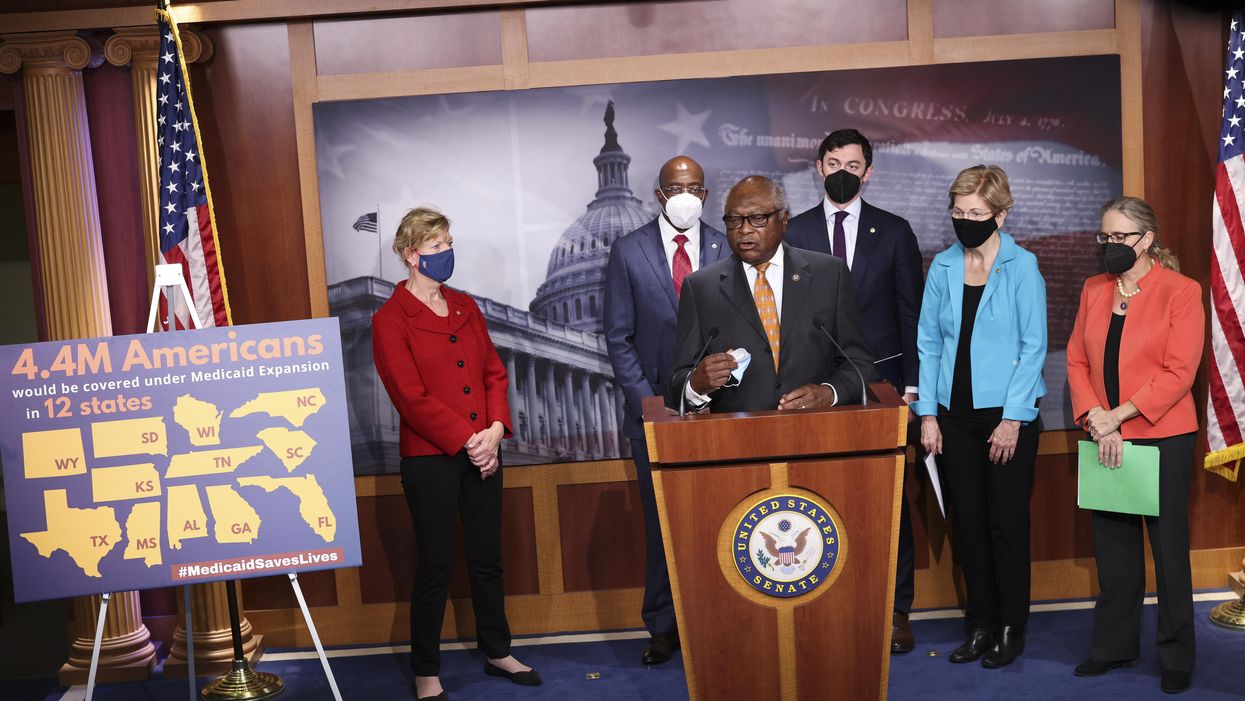This story was originally published in Reckon.
In April of 2022, Reckon and partners including Essential Partners, Cortico, and Bridge Alliance, hosted conversations with Alabamians under 40 about the future of their state for a project called Bridge Alabama. This guide focuses on an issue raised in those conversations.
What’s Medicaid?
It’s the public health insurance program for low-income Americans. It’s designed to help people afford things like doctor’s appointments, lab work and surgeries. Each state runs its own Medicaid program, funded with federal and state money.
Eligibility – who qualifies for Medicaid – varies from state to state
Back in 2010, the Affordable Care Act expanded which people are eligible for Medicaid, extending it to adults up to age 64 with incomes up to 138% of the federal poverty level, which in 2022 is about $27,750 per year for a family of four.
But many Republican-led states, including Alabama, pushed back against the ACA’s Medicaid expansion requirement, arguing the federal government was overreaching. The Supreme Court struck down the requirement in 2012, ruling that Medicaid expansion had to be optional for states.
To date, 38 states and the District of Columbia have adopted Medicaid expansion. In those states, the federal government covers 90% of the costs of the program.
Just 12 states, including Alabama, have not expanded Medicaid. Most of them are in the South. Because they didn’t expand Medicaid, it’s harder for low-income people to qualify to receive Medicaid in these states.
Alabama Medicaid is a bare-bones program. Coverage is only available to children, people with special health care needs and some caregivers.
For example, an Alabama parent with one child can’t earn more than $3,135 a year and still qualify for Medicaid. If that same parent and child lived in Virginia, which expanded Medicaid in 2019, the parent could earn up to $24,000 a year and keep their coverage.
Now the federal government is trying again to entice holdout states. Last year’s federal coronavirus relief package included financial incentives for non-expansion states to expand Medicaid. Alabama Gov. Kay Ivey has said she’s “open to discussion” but continues to question whether the state can afford it.
Why is it controversial?
In the first years after the ACA (often nicknamed “Obamacare”) passed, Alabama’s conservative leaders balked at the potential cost and questioned the constitutionality of the federal legislation dictating how a state ran its healthcare programs.
In recent years, though, Medicaid expansion has lost much of its stigma. A recent poll from expansion advocates showed two-thirds of respondents supported expansion. More than 100 Alabama organizations, including the state hospital association and medical association, have grown more vocal in their support of Medicaid expansion, saying it could insure an additional 284,000 Alabamians, create more jobs, reduce reliance on emergency rooms for basic healthcare, and improve the state’s poor health outcomes.
Even Republican former Gov. Robert Bentley, who refused to expand Medicaid while he was in office, recently called on Gov. Kay Ivey to move forward with expansion.
Although few Alabama leaders outright oppose expansion now, the ones who express skepticism continue to question how Alabama would pay for it.
A study released this year projected that Medicaid expansion would cost Alabama an additional $225.4 million over the next six years, but could save the state an estimated $398 million.
Who is working on the issue?
Cover Alabama is the state’s largest Medicaid expansion advocacy organization. It’s a nonpartisan coalition of more than 100 organizations across the state, including medical associations, faith groups, businesses and consumer advocacy groups.
Regionally, Southerners for Medicaid Expansion is a multi-state coalition of expansion advocacy groups in Texas, Mississippi, Alabama, Tennessee, Georgia, Florida, South Carolina and North Carolina.
Solutions from other states
States that have expanded Medicaid have improved access to care for low-income adults, seen fewer premature deaths among older adults, reduced medical debt, and seen a drop in hospital uncompensated care costs, according to the Center of Budget and Policy Priorities.
Several non-expansion states in the South, including Georgia, Florida and Tennessee, have chosen to partially expand Medicaid by extending Medicaid to birthing people for longer than the six weeks postpartum required by federal law.
In April 2022, after lobbying by advocates, Alabama extended pregnancy Medicaid from six weeks to one year postpartum. This has the potential for significant impact; because eligibility requirements are broader for pregnant people, Medicaid covers about half of all births in Alabama.
The state extended pregnancy Medicaid in two parts: Alabama Medicaid set aside about $4 million in its budget to extend pregnancy Medicaid to six months postpartum; then the Alabama legislature approved a state general fund budget with another $4 million earmarked to bump the coverage to a full year. Legislators have called it a “pilot program.”
How can I get involved?
There are different pathways that states like Alabama can take to expand Medicaid, involving the governor, state legislators and the Alabama Medicaid agency itself. Anyone interested in Medicaid expansion can write or call their state senator and state representative ( find yours here by clicking on the map and entering your address) or the governor’s office.
For those interested in advocacy and information, Cover Alabama offers updates via free email subscription, an online petition to sign, and invites organizations to apply to become Cover Alabama members.
Social media hashtags on Medicaid expansion include #ExpandMedicaid, #CoverAlabama, #south4medex and #ALpolitics.
Resources
- Alabama Medicaid Agency site
- Cover Alabama Coalition, coveralabama.org
- “The Economic Impact of Expanding Medicaid in Alabama”, a 2022 report from the Public Affairs Research Council of Alabama and Jacksonville State University
- “New moms are cut off Medicaid in much of the South. Why some states are considering a change” an overview of pregnancy Medicaid expansion from Reckon
- “Alabama poised to extend Medicaid postpartum coverage” from Reckon
- Southerners for Medicaid Expansion
- Medicaid expansion data, information and research from Kaiser Family Foundation
- Medicaid expansion information and research from Center of Budget and Policy Priorities































